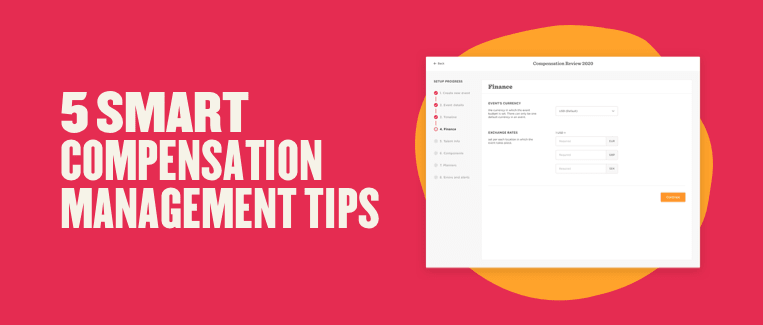Compensation management is one of the most important parts of people management—and the stakes are high. One misdirected email and you’re toast. When discretion is of utmost importance and there’s no room for error, you need to make sure you’re working with tools that keep your information safe, organized, and error-free.
That’s why spreadsheets are a no-go for compensation management. To run something as tricky as compensation management, you need HR tech. It’s not easy to transition legacy processes, though—we know it takes thought and effort. Use the following five tips to begin transitioning your compensation management process to HR tech.
1. Identify what you need in a compensation module
Spend time as a team to discuss the essential items in your HR technology. In terms of compensation, consider the priorities in three areas:
- Fiscal responsibility: How do you monitor comparative rates to ensure you’re not paying over or under market?
- Timely processing: What methods do you have to track and adjust compensation that aligns with the organization’s timing?
- Pay perception: How can you actively assess and address any pay inequities within your organization?
2. Envision the compensation system you’ll need three to five years from now
As you consider what modules you need in an HRIS, look for a compensation offering that meets your needs today but can continue to evolve to meet your needs as the organization evolves.
As your company grows, compensation will get more elaborate. Choosing a future-forward solution will help your processes grow with your headcount.
3. Connect with stakeholders to assess compensation priorities
Compensation management isn’t a one-person operation. Before choosing a compensation management solution, it’s important to have signoff from everyone who will be using it.
Engage with employees outside of HR whose work will be impacted by a new compensation system. Obtaining their input and support is essential to manage the change and successfully implement a new approach to handling compensation.
Recommended For Further Reading
4. Ask your network for recommendations about HR tech solutions
A wonderful thing about working in HR in this global era is unprecedented access to global networks and support. When it comes to looking for a tech solution, you’ll never be alone.
Check in with other HR and compensation managers in your industry about their tech stack. Askt what systems they’re using and how it’s helped them take compensation to the next level, and if they’d recommend you work with what they’re using.
5. Set up discovery sessions with vendors
When it comes to choosing a compensation management solution, you need to find something that fits your needs. While we suggest using Bob for compensation management, we know that every organization has unique considerations, such as price, ease of adoption and use, and support offered.
We suggest picking three to five vendors who offer an HR tech solution that could meet your compensation needs. Schedule time for a demo and prepare to discuss if and how their solution addresses your top priorities.
The data that the HR team handles is not only highly confidential; it’s also used to inform business-critical decisions. At best, an error in the data can mean lost time. At worst, data errors can cause serious legal issues. Due to legal problems around pay (equity, discrimination), carefully managing compensation data is one area that HR cannot leave to chance.
HR technology offers today’s organizations the opportunity to streamline the compensation process and relieve HR professionals of administrative tasks, but it also provides a method for projecting future costs and reducing the chance of risky pay practices.


